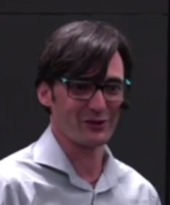View-based SLAM in the 2-1/2D Space with Omnidirectional Images and Feature Point Information
(13 de Abril de 2018)
Planificación
El viernes 13 de Abril de 2018 a las 18:00 h., se impartirá la conferencia «View-based SLAM in the 2-1/2D space with Omnidirectional Images and Feature Point Information» por el Dr. David Valiente García, profesor Departamento de Ingeniería de Comunicaciones de la Universidad Miguel Hernández de Elche. La conferencia tendrá lugar en la Salón de Grados del edificio INNOVA
Abstract
Mobile robotics has experienced an important proliferation in the recent days, with many fields of application available. A great variety of different mobile robots are present in different sectors of society, most of which are designated as autonomous. This term implies that the robot manages to operate itself, without any special supervision. To that purpose, the robot must be enabled to gather information from the environment in order to build its own understanding, which yields a map estimation. The scope of this research is focused on the following aspect: the map building process with visual information from the environment. This process entails a non-trivial task, since it poses a challenge when it comes to obtaining a simultaneous estimation of the localization of the robot, and also of the map. This leads to one of the most essential paradigms in such context: the problem of SLAM (Simultaneous Localization And Mapping). Under this framework, digital cameras have arisen as a promising alternative. Therefore, in this work we propose a new map model, embedded in a visual SLAM approach, which is solely based on the use of omnidirectional images acquired with a monocular camera.
Ponente invitado
Dr. D. David Valiente is an assistance teacher at the Communications Engineering department of the Miguel Hernández University (UMH). He also holds a post-doctoral grant to conduct research in the Systems Engineering and Automation department of 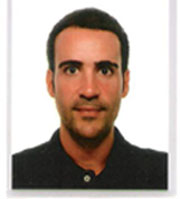 the UMH, under a collaborative framework with the Polytechnic University of Madrid. He received the M. Eng. degree in Telecommunications Engineering from the UMH in 2009. He also received the Best Academic Student award in Telecommunications Engineering by the UMH and the Official College of Telecommunications Engineers. From 2009 to 2011, he worked as a researcher at the Communications department and at the Systems Engineering and Automation department of the UMH. In 2011, he was granted a PhD scholarship in the Systems Engineering and Automation department. In 2012, he received the Master’s degree on Industrial and Telecommunication Technologies from the UMH. He concluded his PhD thesis in 2016, receiving the international doctorate mention. His research interests are focused on mobile robotics, computer vision, omnidirectional cameras, visual features and visual SLAM.
the UMH, under a collaborative framework with the Polytechnic University of Madrid. He received the M. Eng. degree in Telecommunications Engineering from the UMH in 2009. He also received the Best Academic Student award in Telecommunications Engineering by the UMH and the Official College of Telecommunications Engineers. From 2009 to 2011, he worked as a researcher at the Communications department and at the Systems Engineering and Automation department of the UMH. In 2011, he was granted a PhD scholarship in the Systems Engineering and Automation department. In 2012, he received the Master’s degree on Industrial and Telecommunication Technologies from the UMH. He concluded his PhD thesis in 2016, receiving the international doctorate mention. His research interests are focused on mobile robotics, computer vision, omnidirectional cameras, visual features and visual SLAM.
Aplicación de estimulación transcraneal con corriente directa para mejorar el desempeño de tareas motoras
(7 de Marzo de 2018)
Planificación
El miércoles 7 de Marzo de 2018 a las 17:30 h., se impartirá la video-conferencia «Aplicación de estimulación transcraneal con corriente directa para mejorar el desempeño de tareas motoras» por la Dra. Irma Nayeli Angulo Sherman, investigadora del Departamento de Ingeniería Biomédica de la Universidad de Monterrey. La conferencia tendrá lugar en la Salón de Grados del edificio INNOVA
Abstract
Las enfermedades cerebrovasculares son la causa principal de discapacidad, tal como la motriz. Algunos estudios sobre neuro-rehabilitación han mostrado el potencial de la modulación de la excitabilidad de las vías cerebrales motoras mediante estimulación 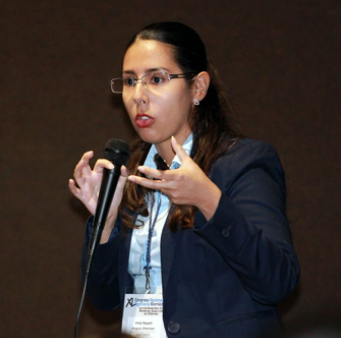 transcraneal con corriente directa (transcranial direct current stimulation o tDCS) para mejorar el desempeño del movimiento. Sin embargo, los efectos de la tDCS dependen de varios factores como la intensidad de corriente, así como el tamaño y la posición de los electrodos de estimulación. Por este motivo, es necesario evaluar distintos montajes de tDCS bajo diferentes parámetros de estimulación. En esta plática se presentan resultados preliminares de la evaluación de un montaje propuesto para influenciar la corteza motora y el cerebelo. Además, se discute el trabajo futuro necesario para su posible implementación en sistemas de interfaces cerebro-computadora con fines terapéuticos.
transcraneal con corriente directa (transcranial direct current stimulation o tDCS) para mejorar el desempeño del movimiento. Sin embargo, los efectos de la tDCS dependen de varios factores como la intensidad de corriente, así como el tamaño y la posición de los electrodos de estimulación. Por este motivo, es necesario evaluar distintos montajes de tDCS bajo diferentes parámetros de estimulación. En esta plática se presentan resultados preliminares de la evaluación de un montaje propuesto para influenciar la corteza motora y el cerebelo. Además, se discute el trabajo futuro necesario para su posible implementación en sistemas de interfaces cerebro-computadora con fines terapéuticos.
Ponente invitado
Irma Nayeli Angulo Sherman es Doctora en Ciencias en Ingeniería y Física Biomédicas (CINVESTAV, unidad Monterrey, México) y candidata a Doctorado en Tecnologías Industriales y de Telecomunicación (Universidad Miguel Hernández de Elche, España) por convenio de doble doctorado con el CINVESTAV. Trabaja en la Vicerrectoría de Ciencias de la Salud como profesora-investigadora para el Departamento de Ingeniería Biomédica de la Universidad de Monterrey. Sus principales áreas de interés son el procesamiento y análisis de señales cerebrales y las interfaces cerebro-computadora.
Dexterous Manipulation and Human-Robot interaction for the factory of the future
(23 de Febrero de 2018)
Planificación
El viernes 23 de Febrero de 2018 a las 16:30 h., se impartirá la conferencia «Dexterous manipulation and Human-Robot interaction for the factory of the future» por el Prof. Dr. D. Juan Antonio Corrales Ramón, associate professor in the Department of Machines, Mechanisms and Systems of the Sigma-Clermont Engineering School (Clermont-Ferrand, France). La conferencia tendrá lugar en el Aula Plató del edificio INNOVA.
Abstract
Dexterous manipulation and human-robot interaction are becoming two key features of the new robots in factories 4.0. With these two new robotic skills, industrial robots become really collaborative partners, by abandoning the classical closed fences and working near human operators. This talk will firstly introduce the new research lines that are being developed in the academic world in order to make industrial robots more flexible and human-aware. Secondly, the research works of the speaker in these two fields during his PhD and postdoc will be described. Finally he will enumerate his current research topics about force control of robotic manipulators, robotic manipulation of deformable objects, bi-arm coordination and physical human-robot interaction in the context of several national and European projects.
Ponente invitado
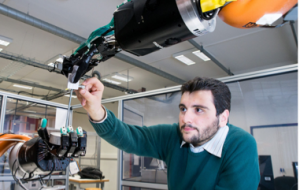 Prof. Juan Antonio Corrales Ramón is an associate professor from 2014 in the Department of Machines, Mechanisms and Systems of the Sigma-Clermont Engineering School (Clermont-Ferrand, France). He teaches real-time systems, control theory, robot programming and sensor integration. He is also researcher at the Institut Pascal laboratory, where he works in dexterous robotic manipulation and human-robot interaction. He received his Ph.D. degree in Robotics and Automation from the University of Alicante in 2011. He worked as postdoc researcher in the ISIR laboratory of the University Pierre and Maire Curie (Paris, France) from 2011 to 2014. He has published papers in different international journals (RAS, IJARS, RCIM, IJICIC, Sensors…) and conferences (ICRA, IROS, ROBIO, ISER, HRI…) and participated in several national and international research projects (FP7 HANDLE, H2020 Bots2Rec).
Prof. Juan Antonio Corrales Ramón is an associate professor from 2014 in the Department of Machines, Mechanisms and Systems of the Sigma-Clermont Engineering School (Clermont-Ferrand, France). He teaches real-time systems, control theory, robot programming and sensor integration. He is also researcher at the Institut Pascal laboratory, where he works in dexterous robotic manipulation and human-robot interaction. He received his Ph.D. degree in Robotics and Automation from the University of Alicante in 2011. He worked as postdoc researcher in the ISIR laboratory of the University Pierre and Maire Curie (Paris, France) from 2011 to 2014. He has published papers in different international journals (RAS, IJARS, RCIM, IJICIC, Sensors…) and conferences (ICRA, IROS, ROBIO, ISER, HRI…) and participated in several national and international research projects (FP7 HANDLE, H2020 Bots2Rec).
Human-Robot Interaction Strategies for Assistance and Rehabilitation
(18 de Diciembre de 2017)
Planificación
El lunes 18 de Diciembre de 2017 a las 17:30 h., se impartirá la conferencia «Human-Robot Interaction Strategies for Assitance and Rehabilitation» por el Prof. Dr. D. Carlos A. Cifuentes G., Head of Center for Biomechatronics
Dept. of Biomedical Engineering Colombian School of Engineering Julio Garavito. La conferencia tendrá lugar en la Salón de Grados del edificio INNOVA
Abstract
Human-Robot Interaction is being increasingly implemented in the assistance and rehabilitation of patients. On the 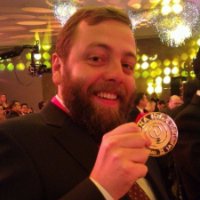 one hand, robot technology supports neurological patients during physical rehabilitation in order to reduce the physical load of the therapist and increase the training duration and intensity of the patient. On the other hand, socially assistive robotics have been applied to therapeutic applications in order to maximize motivation and engagement by means of cognitive interaction. This talk presents some remarks of the design of robotic devices for enhanced physical interaction during gait assistance and rehabilitation, and also some ongoing research of social assistive robotics in the context of neurorehabilitation, cardiac rehabilitation and diagnosis of children with autism spectrum disorder.
one hand, robot technology supports neurological patients during physical rehabilitation in order to reduce the physical load of the therapist and increase the training duration and intensity of the patient. On the other hand, socially assistive robotics have been applied to therapeutic applications in order to maximize motivation and engagement by means of cognitive interaction. This talk presents some remarks of the design of robotic devices for enhanced physical interaction during gait assistance and rehabilitation, and also some ongoing research of social assistive robotics in the context of neurorehabilitation, cardiac rehabilitation and diagnosis of children with autism spectrum disorder.
Ponente invitado
Carlos Andrés Cifuentes García is a Professor with the Department of Biomedical Engineering and Head of Center for Biomechatronics at Colombian School of Engineering Julio Garavito (ECIJG-Colombia). He has been Visiting Professor at Universidade Federal do Espírito Santo, University of Cauca and Plymouth University. Prior to that, he was a postdoc at Universidade Federal do Espírito Santo (UFES-Brazil). He is broadly interested in human-robot interaction and rehabilitation robotics in the context of developing countries.
He was born in Bogota, Colombia. In 2004, he received the BSc degree in Electronic Engineering from ECIJG, where he received the grade of honor, awarded to the highest GPA of his class. He received his Specialization in Project Management in 2006 at ECIJG. From 2006 to 2011 he worked as an entrepreneur and teaching assistant in the field of embedded systems. In 2011, he obtained his M.Sc. degree in Biomedical Engineering from Universidad Nacional de Entre Ríos, Argentina. His master’s dissertation was lauded as one of “10 finalist at the Make It Challenge: Kinetis MCUs Americas» by Freescale semiconductors.
In 2012, he joined the Robotics and Industrial Automation Group at UFES to pursue the Ph.D. degree. He developed a part of his thesis at Automation Institute, (UNSJ-Argentina) and at Neural and Cognitive Engineering group, CAR, (UPM-CSIC-Spain). His Ph.D. thesis (2015), for which he received the Honorable Mention Award CAPES as one of the best theses in 2016 in Brazil, focused on development a multimodal human-robot interface that provides a means of testing and validating control strategies for robotic walkers for assisting human mobility and gait rehabilitation. In 2017 his work was lauded as one of “five history-changing ideas in Latin America» by History Channel.
Multicopters: Operation principles and applications
(26 de Octubre de 2017)
Planificación
El jueves 26 de Octubre de 2017 a las 15:00 h., se impartirá la conferencia «Multicopters: Operation principles and applications» por el Dr. D. Carlos Tavares Calafate, de la Universidad Politécnica de Valencia. La conferencia tendrá lugar en el Aula 2.2 del edificio ALTET.
Abstract
Unmanned Aerial Vehicles (UAVs), colloquially known as drones, are flying devices able to perform programmed flights or being remotely controlled. During the past few years, they have gained international relevance, being capable of performing a wide range of tasks. For instance, planned missions can be defined to supervise farmlands, deliver packages to remote locations, or contributing to create delay-tolerant networks in the scope of Smart Cities. Moreover, by adopting adequate algorithms, it is possible to control the flight of a group of UAVs acting as a swarm, or dynamically create an aerial network infrastructure in a dynamic, on-demand fashion, among many other possibilities. This talk first introduces the main types of multicopters, their components, and their mode of operation, followed by an overview of the main applications these novel flying devices are able to offer.
Ponente invitado
 Prof. Carlos Tavares Calafate is an associate professor in the
Prof. Carlos Tavares Calafate is an associate professor in the
Department of Computer Engineering at the Technical University of Valencia (UPV) in Spain. He graduated with honors in Electrical and Computer Engineering at the University of Oporto (Portugal) in 2001. He received his Ph.D. degree in Informatics from the Technical University of Valencia in 2006, where he has worked since 2002. His research interests include ad-hoc and vehicular networks, UAVs, Smart Cities & IoT, QoS, network protocols, video streaming, and network security. To date he has published more than 300 articles, several of them in journals including IEEE Transactions on Vehicular Technology, IEEE Transactions on Mobile Computing, IEEE/ACM Transactions on Networking, Elsevier Ad hoc Networks and IEEE Communications Magazine. He has participated in the TPC of more than 150 international conferences. He is a founding member of the IEEE SIG on Big Data with Computational Intelligence. Currently, he is actively collaborating with researchers in France, UK, Sweden, Italy, Mexico, Japan and Portugal
Aplicaciones de VISION ARTIFICIAL en nuestro día a día
(5 de Octubre de 2017)
Planificación
El jueves 5 de Octubre de 2017 a las 15:00 h., se impartirá la conferencia «APLICACIONES DE VISIÓN ARTIFICIAL EN NUESTRO DÍA A DÍA» por el Dr. D. Javier Gamo Aranda, de la Fábrica Nacional de Moneda y Timbre. La conferencia tendrá lugar en el Aula 2.2 del edificio ALTET.
Abstract
A diario, utilizamos distintos documentos que sirven tanto para identificarnos como para proveernos de bienes y servicios. Por su alto valor intrínseco, estos objetos suelen estar dotados de diversos elementos de seguridad, que permiten su identificación frente a posibles fraudes. En esta charla, se presentarán algunos ejemplos de objetos de uso cotidiano, y cómo la visión artificial puede ayudarnos en la comprobación de los mismos.
Ponente invitado
Javier Gamo Aranda es Doctor en Ciencias Físicas (Universidad Politécnica de Madrid) y Doctor por la Universidad Nacional de Educación a Distancia (Innovación e Investigación en Didáctica). Trabaja en el Departamento de Investigación y Desarrollo de la Casa de la Moneda, actividad que compagina con la enseñanza universitaria (Saint Louis University y Universidad Carlos III de Madrid), y la divulgación científica. Su área de interés son los laboratorios virtuales y remotos, aplicados a la enseñanza de la
Óptica y la Fotónica. En el ámbito divulgativo, es colaborador habitual de La Voz de la Ciencia, Representante Nacional de la Red “José Roberto Leite” de Divulgación y Formación en Nanotecnología y organizador de TEDxSaintLouisUniversityMadrid
ORBSLAM Sistema de SLAM visual en tiempo real
(2 de Octubre de 2017)
Planificación
El lunes 2 de Octubre de 2017 a las 11:30 h., se impartirá la conferencia «ORBSLAM Sistema de SLAM visual en tiempo real» por el Dr. D. José Mª Martínez Montiel, Catedrático de Universidad de Ingeniería de Sistemas y Automática de la Universidad de Zaragoza. La conferencia tendrá lugar en el Aula Plató del edificio INNOVA.
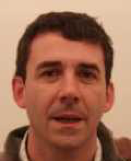
Abstract
Para describir el problema VSLAM (Simultaneous Localization And Mapping with Visual sensors), imaginemos el caso de uso prototipo, una cámara llevada por una persona en su mano, que se mueve observando una escena desconocida siguiendo una trayectoria también desconocida. Empleando como dato únicamente la secuencia de vídeo captada por la cámara los sistemas de SLAM estiman, en tiempo real, tanto un mapa 3D de la escena observada como la trayectoria que ha seguido la cámara durante la observación. Los sistemas SLAM son un requisito imprescindible para la interacción con la escena de un sistema computerizado, siendo los campos principales de aplicación la robótica y la realidad virtual y aumentada.
Se presentarán los elementos básicos que componen un sistema de SLAM actual: sistema de tracking de la cámara que proporciona la posición de la cámara a frecuencia de vídeo; sistema mapping, encargado de la construcción del mapa 3D de la escena; sistema de reconocimiento de lugares, punto de inicio de la relocalización de la cámara y de la detección de los cierres de bucle. Los anteriores componentes serán particularizados en sistema ORBSLAM, disponible bajo licencia GPLv3, desarrollado en la Universidad de Zaragoza.
Ponente invitado
El Dr. José Mª Martínez Montiel es Catedrático de Universidad de Ingeniería de Sistemas y Automática de la Universidad de Zaragoza. Es coautor de numerosas publicaciones en visión por computador y SLAM visual entre las que cabe destacar la que propone el sistema ORBSLAM galardonada con el King-Sun Fu Memorial Best Paper Award al mejor artículo publicado en el IEEE Transactions Robotics and Automation durante el año 2016.
Nuevas tecnologías en la rehabilitación de las personas con lesión medular
(2 de Octubre de 2017)
Planificación
El lunes 2 de Octubre de 2017 a las 12:30 h., se impartirá la conferencia «Nuevas tecnologías en la rehabilitación de las personas con lesión medular» por el Dr. D. Ángel M. Gil Agudo, Jefe Servicio de Rehabilitación del Hospital Nacional de Parapléjicos de Toledo. La conferencia tendrá lugar en el Aula Plató del edificio INNOVA.
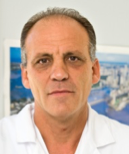
Abstract
La lesión medular tiene un fuerte impacto en el individuo y la sociedad. Se trata de una situación crónica para la persona, con lo que el impacto sobre el sistema de salud no se limita a la fase aguda de la lesión, La persona con lesión medular debe enfrentar durante su vida enfermedades crónicas derivadas de la lesión medular. En los últimos 20 años se ha visto como han aparecido en la rehabilitación de la marcha las terapias robóticas, probablemente debido al avance tecnológico, así como un avance también en el conocimiento de la neuroplasticidad que provocan estos sistemas sobre los pacientes con patologías neurológicas. En los últimos años, en este fenómeno de neuroplasticidad y reorganización cortical se ha visto que intervienen dos factores importantes como son la actividad específica de la tarea y la repetición del movimiento. Por lo tanto, estos sistemas robóticos de reeducación de la marcha permiten, durante el entrenamiento la repetición de cientos de miles de ciclos de marcha, que todos ellos son reproducibles y repetibles, es decir, permiten la prescripción de movimientos precisos con un alto número de repeticiones, siendo factores importantes para el aprendizaje y la plasticidad. Impulsado por los avances en la comprensión del fenómeno de neuroplasticidad, así como en los avances de la tecnología, se ha disparado también las últimas dos décadas el uso de nuevas estrategias tecnológicas para mejorar la recuperación motora después de enfermedades del Sistema Nervioso Central (SNC). Estas nuevas opciones tienen sus raíces en la suspensión del peso del cuerpo y así el fisioterapeuta puede usar técnicas de facilitación manual para simular los pasos del paciente durante la marcha.
Ponente invitado
Angel Gil-Agudo obtuvo su licenciatura en Medicina y Cirugía por la Universidad Complutense de Madrid en 1988 y realizó su periodo de especialización vía MIR en Medicina Física y Rehabilitación en el Hospital Ramón y Cajal de Madrid finalizando en 1993. Trabajó como investigador en el Instituto de Biomecánica de Valencia (IBV) entre 1994 y 1996. Después de más de 15 años trabajando en el ámbito clínico como especialista en Medicina Física y Rehabilitación en distintos centros hospitalarios españoles retomó su actividad investigadora en 2005. Alcanzó el grado de Doctor en 2009 por la Facultad de Medicina de la Universidad Complutense de Madrid gracias a un trabajo sobre el análisis biomecánico de la propulsión manual en silla de ruedas de los lesionados medulares. En estos momentos es Jefe del Servicio de Rehabilitación del Hospital Nacional de Parapléjicos de Toledo y Director del Departamento de Biomecánica y Ayudas Técnicas de dicho centro sanitario. El objetivo fundamental de la actividad del laboratorio que dirige son las aplicaciones clínicas del análisis de movimiento en pacientes con lesión medular (análisis de la marcha en síndromes incompletos de lesión medular, propulsión manual en silla de ruedas, análisis de la distribución de presiones entre el usuario y los cojines antiescaras, movimientos realizados con los miembros superiores). Fue responsable del Comité Médico de la Federación de Deporte para Discapacitados Físicos entre 1998 y 2004 participando en los Juegos Paralímpicos de Barcelona 1992 y Sydney 2000. Recientemente, su investigación se centra en la aplicación de la Biomecánica en el desarrollo de sistemas de realidad virtual para rehabilitación de trastornos motores de los miembros superiores (Toyra) y en el desarrollo de robots portables o exoesqueletos con sistemas de control híbrido para la compensación o rehabilitación de movimientos en miembros superiores e inferiores. Es profesor asociado en la Facultad de Medicina de la Universidad de Alcalá de Henares.

